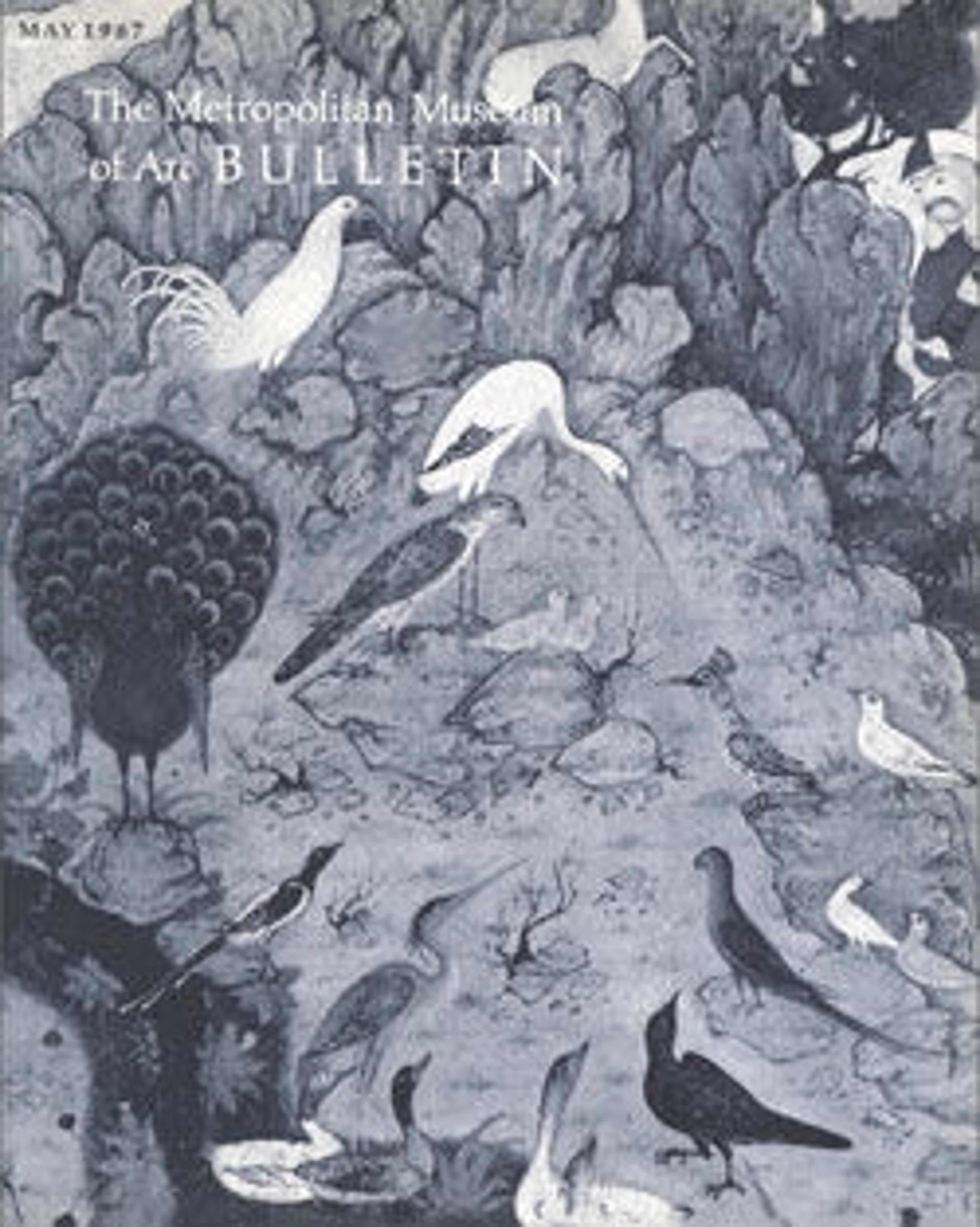"Shaikh San'an and the Christian Maiden", Folio 22v from a Mantiq al-Tayr (Language of the Birds)
In another tale from the Mantiq al-tair, a sufi shaikh falls in love with a Christian maiden, who subjects him to many demeaning tasks to test his affections. When his followers finally convince the shaikh to leave, the maiden—realizing the error of her ways—sets off on the arduous path after him. This painting depicts the moment in the story where the shaikh, deciding to return to her, instead discovers her collapsed along the road. With her dying breath she apologizes, converts to Islam, and bids him farewell, while his astonished disciples look on.
Artwork Details
- Title: "Shaikh San'an and the Christian Maiden", Folio 22v from a Mantiq al-Tayr (Language of the Birds)
- Author: Farid al-Din `Attar (Iranian, Nishapur ca. 1142–ca. 1220 Nishapur)
- Date: ca. 1600
- Geography: Attributed to Iran, Isfahan
- Medium: Opaque watercolor, silver, and gold on paper
- Dimensions: Painting: H. 7 3/8 in. (18.7 cm)
W. 4 1/2 in. (11.4 cm)
Page: H. 12 7/8 in. (32.7 cm)
W. 8 5/16 in. (21.1 cm)
Mat: H. 19 1/4 in. (48.9 cm)
W. 14 1/4 in. (36.2 cm) - Classification: Codices
- Credit Line: Fletcher Fund, 1963
- Object Number: 63.210.22
- Curatorial Department: Islamic Art
More Artwork
Research Resources
The Met provides unparalleled resources for research and welcomes an international community of students and scholars. The Met's Open Access API is where creators and researchers can connect to the The Met collection. Open Access data and public domain images are available for unrestricted commercial and noncommercial use without permission or fee.
To request images under copyright and other restrictions, please use this Image Request form.
Feedback
We continue to research and examine historical and cultural context for objects in The Met collection. If you have comments or questions about this object record, please contact us using the form below. The Museum looks forward to receiving your comments.
